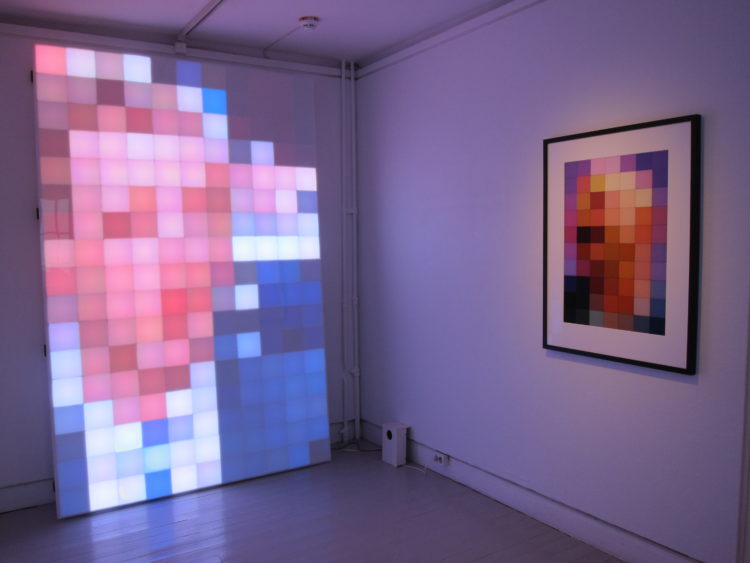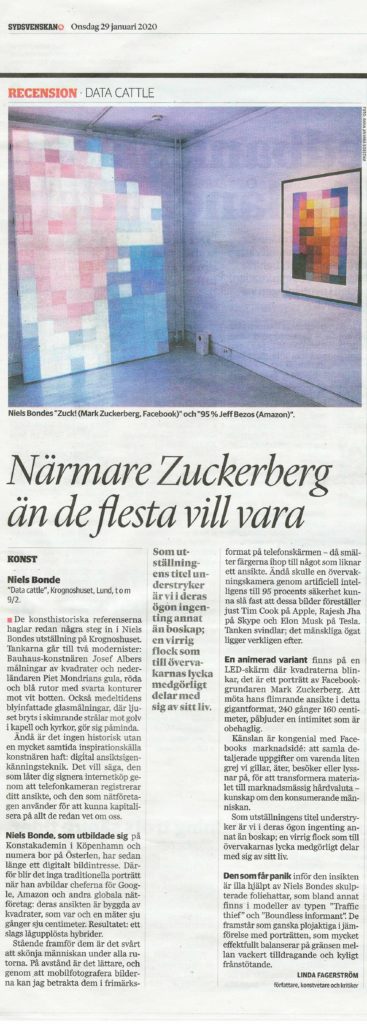
Data Cattle
Disruption is the rallying cry of new tech, and as Facial Recognition and analysis are developing at breakneck speed creating a legislative vacuüm, disruption may soon be the effect we encounter any time we show our faces. Automatic recognition of salmon and cows optimizes production, but is it OK to use it in our health care system, and have a robot diagnose us with a genetic disease? Inaccurate software programming containing algorithmic race-specific prejudices, could be corrected with “better” data. But is that approach really enough? Paradoxically we worry about Facial Recognition, AND we want to make it work better. Facial Recognition and the algorithms’ analysis of our faces go far beyond identification; in a range of applications that categorize feelings, intentions, intelligence, ethnicity, gender as well as guess our sexual orientation and BMI. Comprehensive Facial Recognition systems interwoven with a social credit system, determinining if you can travel and where to, which schools you can attend, are already deployed in Shenzhen . The purposes of this, may not be as Orwellian as it sounds, but we should vet the extent of the implementation of Facial Recognition and analysis, as the technology have no natural limitations.
Facial Recognition has developed beyond being dismissed as fanciful speculation. Before this type of system becomes ubiquitous, it is crucial that we – both decision-makers and citizens alike – have discussed the principles of this technology as widely as possible. But for that, we need to develop a language for how this technology works and affects us.
This language can be developed through art.
These apparently abstract pixelated images, with pixels organized without any particular structure. The heavily pixellated portraits of the digital economy overlords, the CEO’s of some of the companies that are to benefit from extensive collection of Big Data, where Facial Recognition is just one little part: Amazon, Google, Microsoft etc.
The project is about Facial Recognition based on very small amounts of data and to show exactly how little data is required. If you use the proper algorithms to restore a low resolution photo, you need no more than 6 x 7 pixels to get 95% secure recognition from a publicly accessible image database. Facial Recognition is something we use a special part of our brains to recognize family, friends and acquaintances. When used in automation with cameras and computers, in supermarkets, at concerts and soccermatches our browsing habits, purchases, credit card information, friend networks and much much more will be linked to us as individuals to our faces, forever.
These abstract images are therefore not abstract anymore.
The work is shown on on custom made LED screens, as framed prints and tin foil helmets each referring to one of NSA’s spy programmes as disclosed by Edward Snowden.

